Barry X Ball Interview
Where do you grow up and when did art start to interest you?
I was born and raised in suburban Los Angeles. What to school Pamona College. Was an economics and math major until I switched late to art with an emphasis on art history.
I was raised by severe fundamentalist Christians and escaped that right as I discovered art. In a way, it became my new religion.
After graduation, I went to New York, and a professor I had at Pomona had encouraged me to move back here at that time, Los Angeles was a distant number two but I wasn’t only was coming to New York, I was also getting away from the residual parts of my Christian family’s oppressive situation.
Start clean, The closest you can get to Europe is to move to New York. The core of my work is heavily influenced and inspired by European traditions.
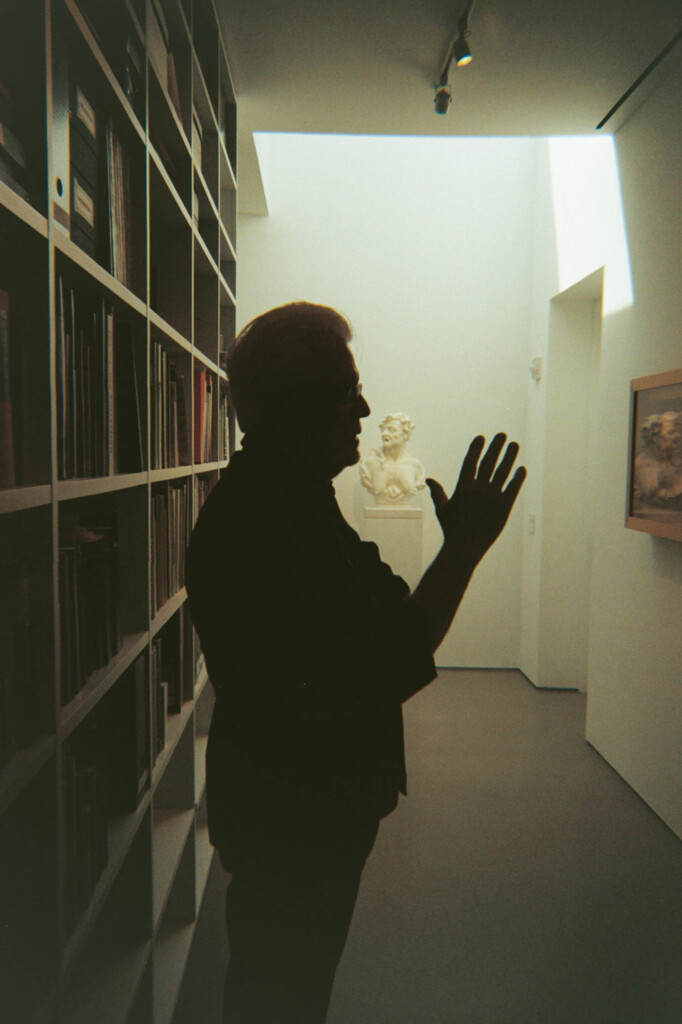
Is your religious upbringing part of the reason why a lot of religious figures are prevalent subjects in your sculptures?
In my first semester in college and took art history.
I saw the sweep of human endeavor, that was heavily grounded often in religion. Somehow beauty on an essential level came and hit me. almost like an alternate form of religion.
I linked it with all the Bible passages I’ve been forced to memorize as a child. They started to actually have formal depictions. We weren’t allowed to have religious depictions when I was younger, there were no sculptures in the churches that I went to, they were plain white sheetrock boxes,

And what introduced you to sculpting?
I look back now and see that I really was a sculptor since my first works in New York, even though they hung on a wall in painting space, from the beginning I made my own supports and they were elaborately worked out.
The first official sculptures of mine were created in the early nineties, 30 years ago. They were an extension of my exploration of monochrome works, abstract forms of minimalism. I made my first figurative work in about 1995.
I remember 9/11. solidified that desire of my part to move away from art about art, to pure abstraction and engaging on sub-level with humanity. Just how hard it hit me, all the death and seeing portraits of people in wars, mangled and mutilated. I wanted to more directly engage with that.
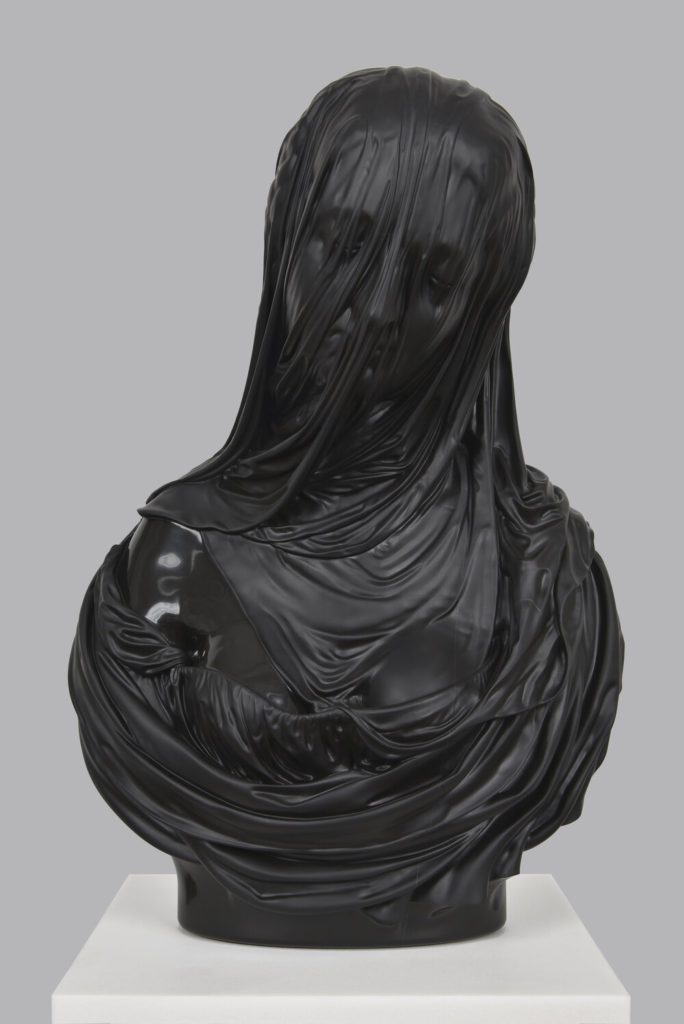
I’ve really avoided figurative training in a classical form my whole life. I actually think it’s a strength because I can approach figurative work in a new way. Aided tremendously by advances in technology, 3d scanning, computer design, computer-controlled milling, digital sculpting, etc.
And I can almost achieve something new that’s related to a long tradition because of the new tools that are available.
Yeah, your sculptures reference old works, but at the same time are revitalized into something new and contemporary.
Art history really just exploded my worldview. Simultaneously when I was learning through the classics. I fell in love with radical modernism, dada, futurism, Marcel Duchamp, minimalism, pop.
They opened my eyes to the possibility of making things that had no reason for being, but had every reason for us to be doing it.
You’re working in a long tradition. You’re doing what artists had done for thousands of years. Taking the example of the modernists, you’re simultaneously working in a tradition and working against it. Art could be anything I wanted it to be.
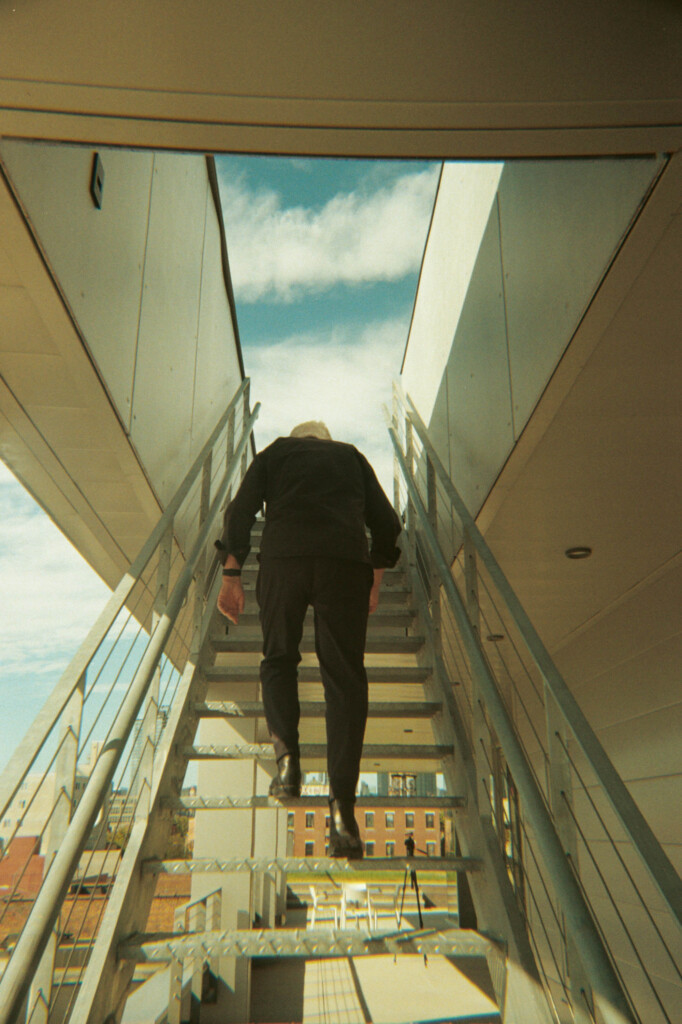
I think one of the things that stands out most about your work is the materials you use. You seem to be very conscious of what stone to choose that you have different reasonings for each. How do you choose the materials that you use and is it hard to find exactly what you’re looking for sometimes?
Again, I’m glad I had no formal training to make stone sculptures. The first time I ever made a stone work, I employed 3d digital scanning, computer numerically controlled milling machines, robot wire saws. I’d never chipped away at it or used a chisel and a hammer to sculpt. I don’t really work in the tradition of using marble either.
I was stunned to realize that a lot of the stones in the world had not been explored. I want the material to assert itself and reveal its inherent qualities. I let the stone remain stone and utilize the natural qualities that it has, which would be viewed as imperfections in earlier times as part of the way that it forms.
It’s an implied sense of violence or degradation or rotting at the time. My favorite stone, Mexican Onyx, it looks like it’s been wounded. Something to make more explicit rather than inherent violence. It has a kind of bizarre beauty, a tortured beauty.

Were you always interested in geology and the formation of natural materials?
I started to explore stone, not reflexively choosing it, but kind of wondering really what this stuff is. Stepping back from your knowledge of all the classics and going, why are we using that material? There has to be a reason. Now, there are many materials you could make a sculpture from, many more than there used to be available in the past. So you better have a damn good reason for using the stone.
And it was the fact that it came with this incredible natural variety. I wouldn’t call myself a geologist, but I understand a lot about how it’s formed. I try to incorporate the sedimentary layering into what I do. I’ve almost became an amateur 19th-century scholar, not knowing so much about its chemical structure, but knowing a lot about how it looks.
You never know what’s going to change your life. And sometimes, you know, it could be the professor. What if I had a really boring or history professor? His name is Gerald Ackerman, he wept in class. He had seen those damn slides he was teaching with semester after semester for many years. And somehow when Bernini’s Saint Teresa, came up on the screen, the guy got emotional. That really hit me because that link with religiosity, even in a secular context, he got super emotional over the form of the sculpture, how it was realized, and the beauty of the achievement.
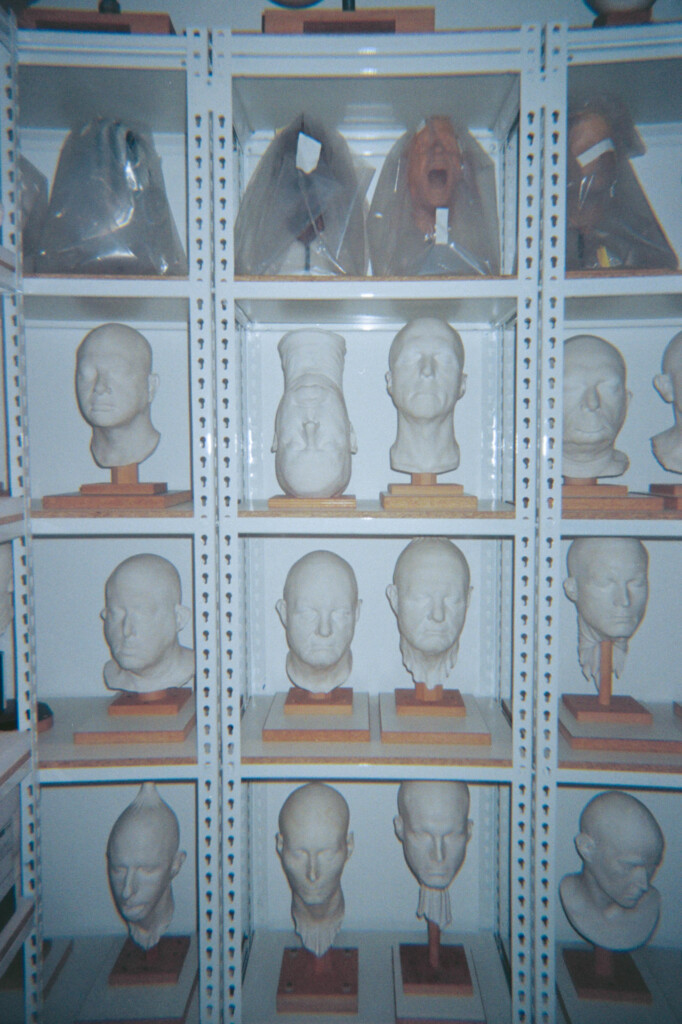
Ever since. I thought my goal is to truly create, something drop dead, like wow, how could a human have done that experience.
You get that with certain masterworks from the past. I mean, it’s a cliche, but everybody goes to see David in Florence for the first time. You’ve seen it a million times reproduced, but you get there and go, wow this thing is amazing. No wonder this thing has influenced so many people.
Maybe I’ll search my whole life and never get there but that’s the goal, to try and create something that brings us outside of ourselves as humans. This exulting emotional thing that we try to make ourselves with all of our weaknesses.
How often are your designs original and how is the process different than referencing something else?
It’s a good question because it’s a mix. I mean I really feel that thousands of really subtle changes are implemented when working with a direct historical model to make it mine.
Balancing between holding on to all the power that the historical work brought to me and taking it to a new place and making it mine, but not doing something crass or a one liner.
Like taking Michelangelo Pieta and putting myself in the Virgin’s lap. Humor doesn’t really last very well. One-liners don’t have that residence. I’m looking for multi-layered complexity.
I’m looking for the richness of Andy Warhol, who was far more than the surface artist and looking for things that operate on multiple levels. Sometimes I start with my own creations from scratch and sometimes I start with somebody else’s and take it to another place.

What would you say is the best time you’ve had creating?
I’d have to say, even though it’s a close tie between right now and my early years in New York, When I had no career, I was a messenger and I was really alone.
So I could think about what I wanted to do and make. You know, nobody was seeing what I was producing. I was really trying to develop something new on my own for the first time in my life. I fed off those years ever since.
I purposely chose a job that I had had almost no human interaction with, so I could think. I even bought my delivery truck without a radio. So I wouldn’t be distracted as I drive.
I was just making art with limited means, tools, and facilities. Just a real dedicated approach.
I was a musician, I played classical piano my whole life, picked up the guitar in high school and got serious about it. I played it a lot during those early years but I realized that it was a distraction, that it was so easy to pick that up and get beauty out of it, and art was hard.
I reluctantly sold the guitar because I realized that if you’re going to make art at a high level, you’ve got to throw everything into it and have nothing getting in the way. I think we’re still there. I work seven days a week, I spent a lot of nights here.
It’s what I’m interested in, no real vacations, nothing about money. Any money I make gets instantly poured back into making the art, not into side pursuits. My Ferrari is my Pellegrini downstairs, my computer-controlled diamond wire saw. I think art’s not just the thing you do It’s who you are.

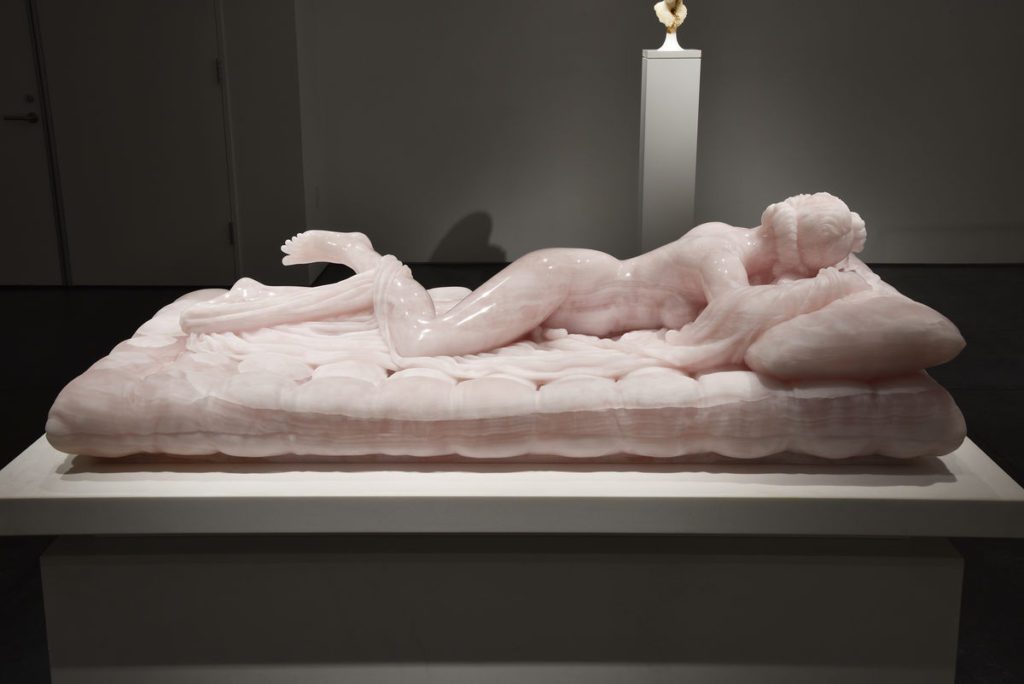
What would you say is your proudest moment?
There was a one-person show that Fergus McCaffrey gallery presented my work at, TEFAF Maastricht, which is The European Fine Art Fair. It’s where you have this incredible mixing of art from all areas a little bit.
There were 20 contemporary galleries. I was showing next to Egyptian art, a booth of modernist furniture, and 19th-century paintings. I was showing this one work, in particular, my Sleeping Hermaphrodite that I worked on for a long time.
It was a labor of love for this fantastic supporter of my work, Lauer Mattioli (of CIMA), and we showed it there. There was a line of people who were amazed by the sculpture. We had to get a barrier to protect it from the crowds. It’s pretty deeply satisfying when you have something that you made over so many years, to have people stunned by it as an object.
And also because I don’t have a big name, people weren’t just going to see what a big well-known artist is up to. It was like, there’s this thing that simply got through to a lot of people.

Yeah, you were saying that the sculpture you doing of St. Bartholomew, took 10 years to make, What’s the importance of being patient in your process, knowing that it may take a lot of time to create one thing and it’ll be worth it at the end,
it’s a huge risk. I’ve almost always worked without a commission to fund this multi-year effort. I hope it’s going to be a stunning work of art at the end, but you take the risk that you’re going to put all this effort into something and maybe it’s not that good.
You kind of get hooked on that drug, Big risk, Big reward. No pain, no gain,
I don’t think about it so much. You get it right, you do it at the highest possible level you can think of for every aspect.
I want that object to have an intensity that even the highest fabrication level objects that we encounter in daily life don’t have. If I sit in a Mercedes 600. I can find the flaws in the gaps of the dash.
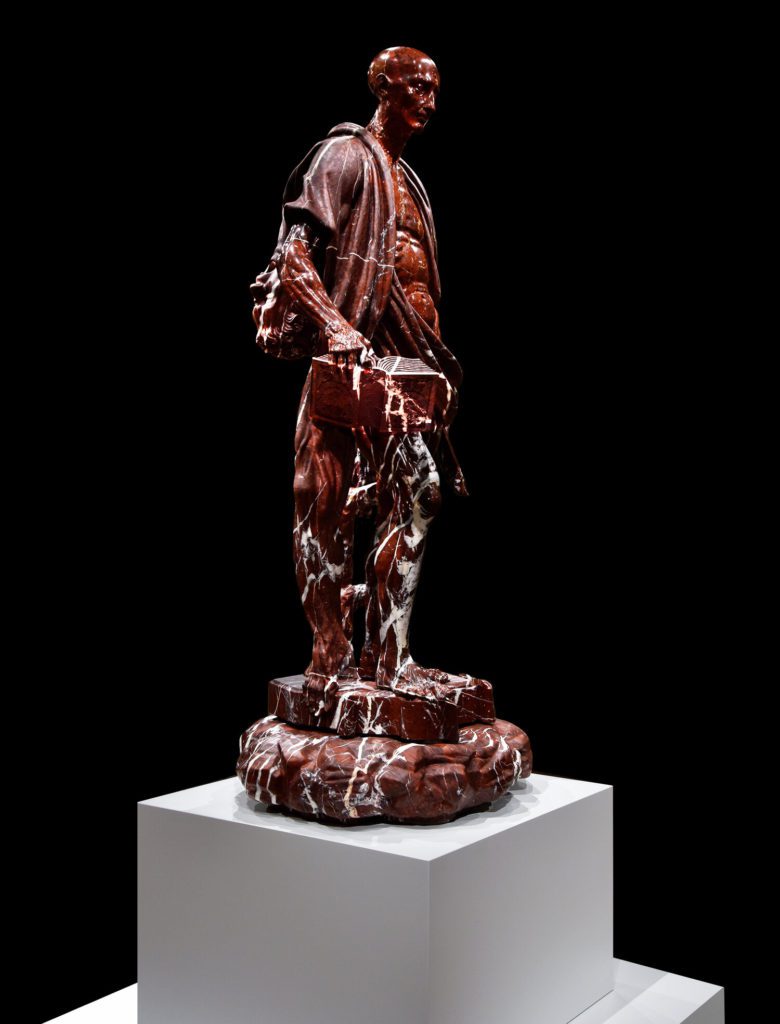
I want these things to have this weird vibration like they’re otherworldly and it takes that long to do it. I’m really grateful for the collaboration of my studio staff and the creation of those things.
I know that not all the people that worked for me aren’t quite as neat. I always joke and say, don’t worry I’ll never come to your apartment and see that your bed’s not made. As long as you’ve come here to my studio and we all work in this one crazy way until we can’t do it any better.
We keep going. For no other reason do we stop than when it’s finished, Not because there’s a deadline or we’re losing too much money.
It’s weird to kind of step outside of practical considerations and make an object that way. But I actually defined art simply that way. It’s the best thing humans could do.

Given the extreme amount of time, effort and money put into these works, I’d imagine you want these to live on for like centuries and be looked at as masterpieces. Are you conscious of a legacy that you’re leaving behind for yourself?
I think when I talk with my studio team, I always say, look, it’s got my name on it. It’s a kind of a career thing, a sculpture by Barry X Ball. But the people who work for me all know that this is a joint effort where I’m bringing together people who are probably better than I am. I think there’s a strength in that. I’ve done a little bit of everything around here,
But it’s not something I’m making, it’s something we’re making. In the end, it gets to live beyond all of us. Hopefully, they all take pride in the fact that they’re working on it at this really high level of work that’s going to be cared for and conserved.
I have been influenced by two thousand, three thousand, five thousand-year-old objects. That’s the intensity I’m going for
I kind of say, look guys, we’re going to be judged by this as an American, New York, culture in the future.
The world of politics and health at the moment. There’s a lot of stuff that seems super important, but in the end this thing we’re making may be the relic that you’re talking about that we’re judged by. Let’s do our part to go toe to toe with the best things ever made.

Barry x Ball Interview
More Barry x Ball to check out.
https://www.instagram.com/barryxballstudio/?hl=en





